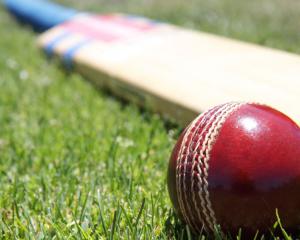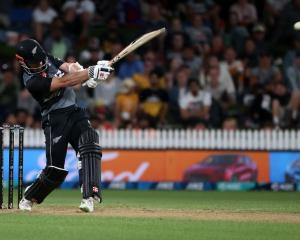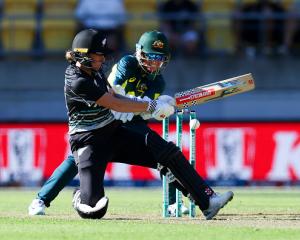
India have embarrassed New Zealand by 186 runs in their final round robin match at Derby this morning, ousting them from the cricket World Cup.
After being sent in, India paced their innings perfectly to reach 265 for seven. In reply, the White Ferns were dismissed for 79 with their last seven wickets falling for 28 runs.
It was their lowest score in 11 editions of the tournament, and the first time they have finished outside the top four.
India meet Australia and England play South Africa in the semi-finals.
Sloppy fielding, wayward bowling and deficient batting - particularly against the spin of Rajeshwari Gayakwad - saw New Zealand outplayed when it mattered most.
If ever a match-winner was demanded, this was the fixture.
On paper the New Zealand side was full of them; in reality India produced four.
Prolific captain Mithali Raj made her sixth ODI century with 109 off 123 balls. She was backed by Harmanpreet Kaur (60 from 90) and Veda Krishnamurthy (70 from 45).
Krishnamurthy's innings was arguably the most instrumental. India were 154 for four when she came to the wicket in the 37th over. The platform set by Raj and Kaur's 132-run third-wicket stand could have been dismantled.
Krishnamurthy was having none of it.
Her innings even included 28 runs from seven balls between Lea Tahuhu's 46th over and captain Suzie Bates' 47th.

Gayakwad, a left-arm orthodox spinner, mopped up the puddle of New Zealand resistance. She took five wickets for 15 from 7.3 overs. Amy Satterthwaite top scored with 26.
The White Ferns brimmed with the sort of professional talent which is in demand on the global Twenty20 franchise stage, yet they were beaten by Australia, England and India in the 50-over campaign's key contests.
New Zealand's semi-final chances became a mirage as their potential outweighed their application.
An abandoned match against South Africa stymied their momentum, but the hammerings of Sri Lanka, the West Indies and Pakistan revealed the batting pedigrees of Bates and Satterthwaite (Sri Lanka), Rachel Priest (West Indies) and Sophie Devine (Pakistan) in comfortable chases.
They wavered when knock-out cricket loomed.
"We were nowhere near as good as we needed to be," Bates said at the post-match interview on Sky Television.
"That's how it's been in pressure games this tournament. We started well, but in the middle phase we haven't been able to break partnerships.
"There's going to be lot of reviews of our team because we were expected to make the semi-finals. It was a good batting track, but we wanted to keep them under 250."
The 34-year-old Raj was named player of the match.
"For a couple of us, this will be the last World Cup, so our first aim was to enter the semi-finals," she said. "I've always dreamt of getting runs for my country. The hunger never dies.
"There were two vital stands, with Harmanpreet and Veda. After the powerplays, we needed more runs. Veda's 70 was as important as my century.
"Harmanpreet's knock was important too. If you're aiming to be in the top four teams in the world, you have to come back after defeats. In previous World Cups we hadn't done that."
Batting rather than bowling was New Zealand's core problem, although they conceded more than five-runs-per-over in their final two matches against England and India despite early restrictions.
New Zealand Cricket has offered unprecedented backing to the White Ferns as part of November's mea culpa for a sustained neglect of the women's game.
The incumbents failed to repay that faith in England as the sport's global gender equity gap narrows.
The White Ferns flew business-class to the event; every match has been broadcast - either on television or live-streamed - for the first time; prize money has risen from US$200,000 to US$2 million with the winner to receive US$660,000. By comparison, the men's Champions Trophy kitty totalled US$4.5 million.
"It's the first time [the tournament] feels like it has been in the spotlight," Bates said at a captains' pre-tournament media conference.
"It has often gone under the radar... but the way the women's game is going, there is more media coverage and critiquing of how you go about things. That brings added pressure."
A significant income stream is also taking shape for New Zealand women's cricketers, at least compared to the past.
Last August's three-year memorandum of understanding between NZC and the New Zealand Cricket Players' Association saw 15 women awarded annual contracts ranging from $20,000 to $34,000 with match fees - $400 for ODIs and $300 for T20Is - and an annual $2500 superannuation payment.
Top players are contracted to the flourishing Australian and English T20 leagues, and receive endorsement deals.
Bates stressed her side wanted to avoid the disappointment of last year's World T20 where they won their pool games but lost the semi-final to eventual winners the West Indies.
"We have an experienced batting line-up in particular. We're good enough to win."
The opportunity was not seized.











